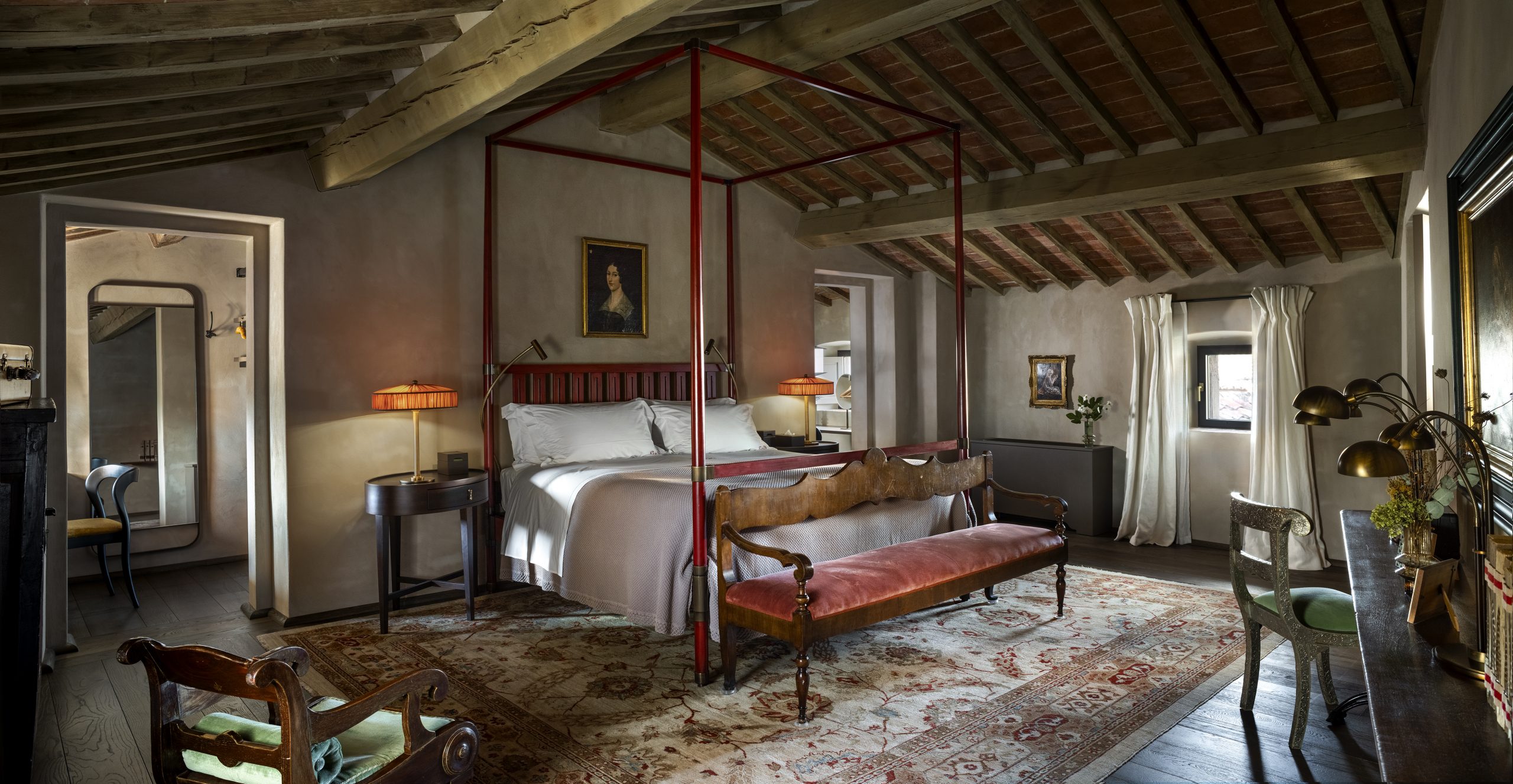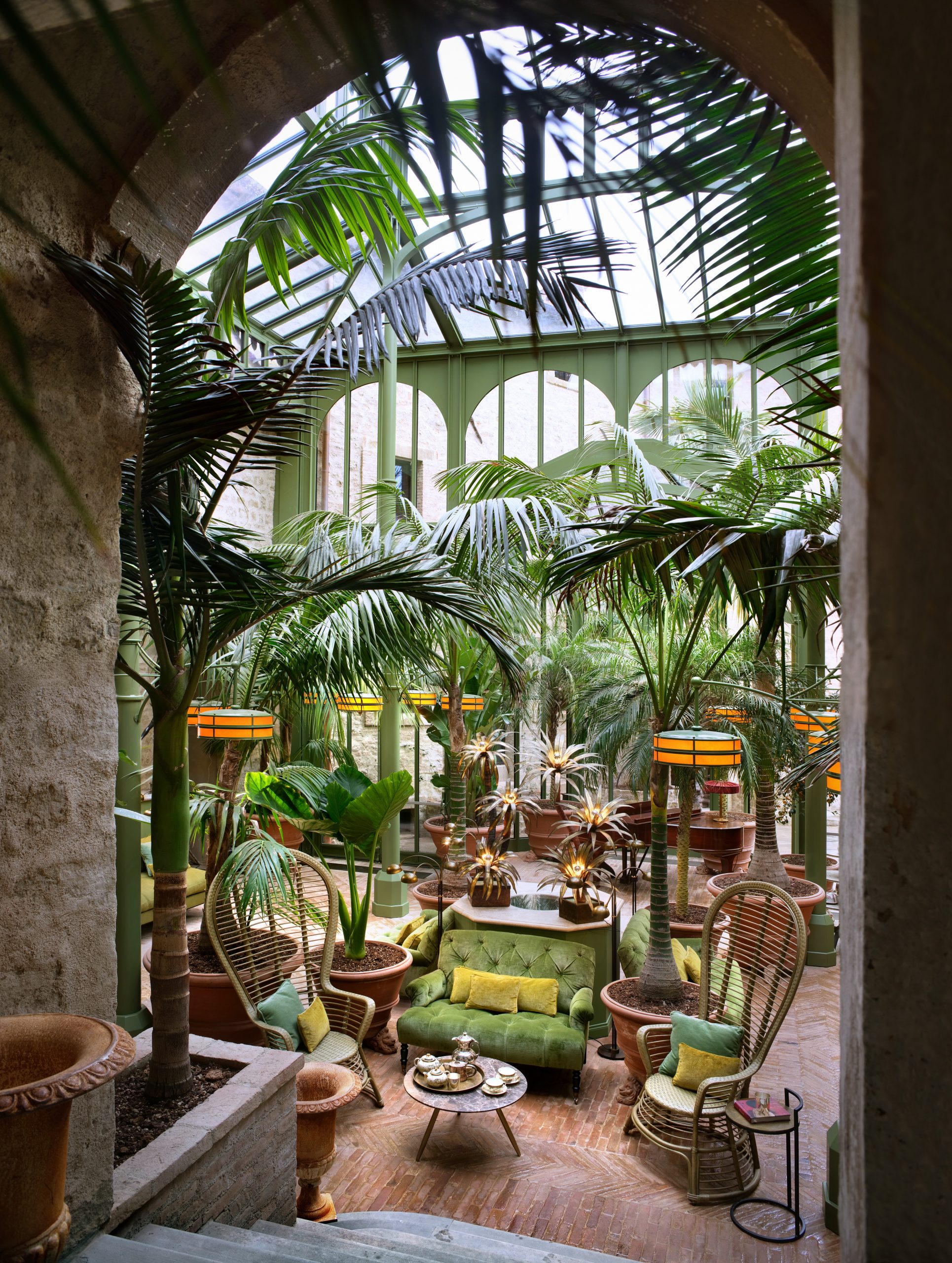The luxury Italian hotels rising from the ashes
Castello di Reschio is leading the way when it comes to agriturismo-inspired travel. Phoebe Hunt and Rosie Paterson check in.


There's seemingly no where else on earth, but Italy, that's similarly capable of fashioning a luxury hotel out of literal ruins. And from castles to former pilgrimage sites, there is no project too big.
Here is our selection of the very best.
Hotel Castello di Reschio, Umbria

Hotel Castello Di Reschio, on the Tuscan-Umbrian border, is an imposing 11th century fortress set inside nearly 4,000acres of undulating countryside — the seat of eccentric Count Antonio Bolza and his family of artists, botanists and architects.
Bolza’s family — an Austro-Hungarian family, of Italian origin — were forced to abandon their home in 1949. Bolza returned sporadically, but did not settle down until 1984, when he bought Reschio — then a dilapidated estate left to the clutches of Nature, comprising the ancient castle and numerous cottages.
‘My aristocratic father had to take a job mixing cement when we fled to Austria in 1949,’ he tells me, over a glass of Spumante Rosé Principe Corsini, made by his in-laws in Tuscany. ‘Do I have a sense of fulfilment and contentment having refound a castle for my family, restoring it to its former glory? Absolutely?’
Today, as well as the hotel, there are eight houses to rent, two restaurants, three bars and a world-class equestrian centre — with a string 40 purebred, Spanish dressage horses, trained by Antonello Radicchi.

The restoration works were overseen by Count Bolza's son, Count Benedikt Bolza his wife, Nencia. It was a lengthy process — by oh my, was it worth it. The interiors are a master class in the type of understated luxury that Italy does all too well. Dine beneath ginormous Crittal windows and lofty potted palms at Ristorante Alle Scuderie; slumber in your plaster-walled bedroom, some with ancient wooden-beamed ceilings.
Exquisite houses, the beauty of Nature, and how to get the most from your life, straight to your inbox.
There are foraging walks, cookery lessons and birdwatching opportunities from the lakeside cabin (alternatively you can fish in the actual lake). Alternatively, try your hand at truffle hunting or muster up the patience to go wildlife watching. And you’d be silly to miss Bottega di Reschio —the shop selling sustainably-grown olive oils, wines, golden honey and biodynamic veggies, as well as some just as tempting non-edible treats.
Best of the Rest
Of course, Reschio isn’t the first Italian castle saved from ruin and turned into a boutique hotel: in Tuscany, Castello del Nero is layered in frescoes, some dating back to the 12th century. And in Maremma, Castello di Vicarello offers five-star luxury framed by organic vineyards and views of the Tyrrhenian Sea.
In Piedmont, Italy’s northern region specialising in truffles and Nebbiolo, you’ll find Nordelaia — an 800-year old farmhouse that opened in July 2021. There are only 12 bedrooms, designed by the brains behind HIDE in London’s Mayfair.

Borgo Santo Pietro in Sienna is probably the best example of Italian agriturismo—essentially a farm designed to receive guests. The 300 acre estate — one a resting place for pilgrims in the Middle Ages — is a hotel and organic farm rolled into one. They grow their own organic veggies and produce artisan cheeses, honey and olive oil.
Like Reschio, these places are special because they’re not museums. They are living and breathing operations, normally owned and run by visionary families with a desire to protect a unique and traditional way of life.

Monastero Santa Rosa, Amalfi: A monastery that's become a beautiful hotel
Hetty Chidwick visited Monastero Santa Rosa on Italy's magical Amalfi coast, and didn't want to leave.

Credit: Alamy
Two middle-aged ladies, one beautiful Fiat, and a magical week in Umbria
Mary Miers teamed up with an old friend as she visited one of Italy's most enchanting regions.
Rosie is Country Life's Digital Content Director & Travel Editor. She joined the team in July 2014 — following a brief stint in the art world. In 2022, she edited the magazine's special Queen's Platinum Jubilee issue and coordinated Country Life's own 125 birthday celebrations. She has also been invited to judge a travel media award and chaired live discussions on the London property market, sustainability and luxury travel trends. Rosie studied Art History at university and, beyond Country Life, has written for Mr & Mrs Smith and The Gentleman's Journal, among others. The rest of the office likes to joke that she splits her time between Claridge’s, Devon and the Maldives.
